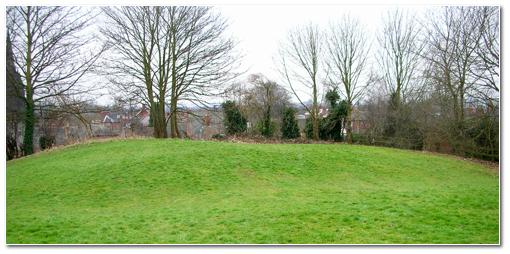The 17th century fieldwork known as Prince Rupert’s Mound is the only upstanding example known to survive of a number of Civil War fieldworks constructed at Lichfield. It is located at the top of a south facing slope, with a commanding view of the Cathedral and lies 65m north east of Beacon Street, the principal historic routeway into the City from the North West.
With its strongly defended Cathedral Close and its position as a focus of communications, Lichfield was of strategic importance during the English Civil War. Early in 1643 the Cathedral Close was garrisoned by Royalists under the command of the Earl of Chesterfield. Parliamentary forces besieged the Close between 1 and 5 March 1643, led initially by Lord Brooke and latterly by Sir John Gell, with further reinforcements under the command of Sir William Brereton. Following Chesterfield’s surrender, a parliamentary garrison occupied the close under Colonel Russell.
Shortly afterwards, between 7 and 21 April 1643, a second siege resulted in the new close being recaptured by Royalist troops under the command of Prince Rupert, nephew of Charles I.
Prince Rupert’s Mound is associated with this second siege and is believed to be the battery from which he bombarded the close during the siege. Prince Rupert was arguably the most famous and distinguished Royalist of the English Civil War. Though at times considered impetuous, he was an expert in siege warfare and cavalry tactics and was an outstanding leader of small mobile forces.

Lichfield then remained a Royalist stronghold until virtually the end of the war. In March 1646 following the capture of the City by Sir William Brereton, the Cathedral Close was again besieged. This siege lasted four months and ended with the Royalist surrender on 10 July. During this time Brereton constructed a series of fortifications around the town, including four ‘mounts’ or mounds. One just to the North of the close was adapted to form a small fort for cannons and was known as ‘Gloucester Mount’ after the Gloucestershire men who manned it.
While Prince Rupert’s Mound is traditionally associated with the second siege, the possibility exists that this gun battery was built or modified at the time of the third siege and was ‘Gloucester Mound’.